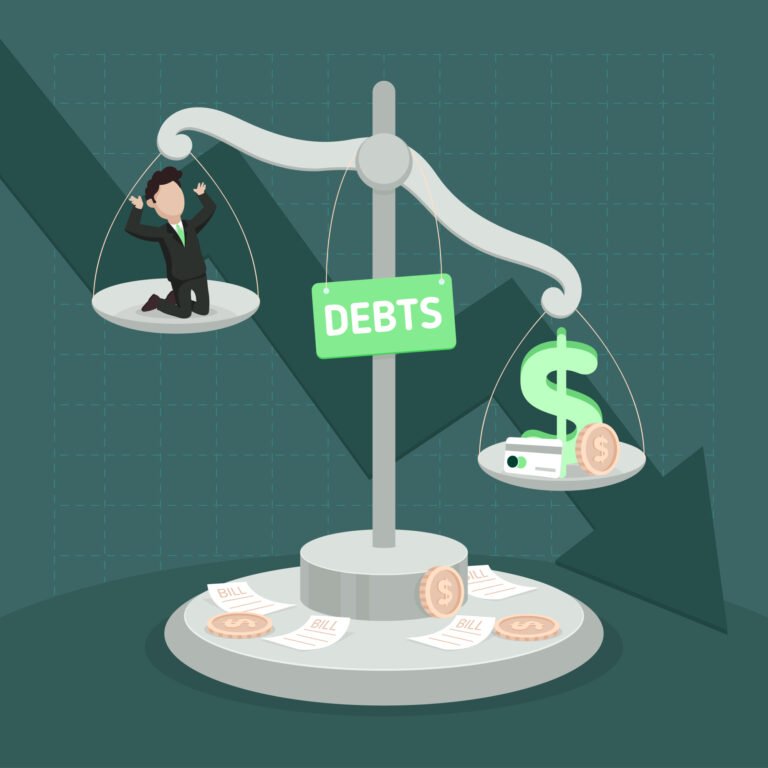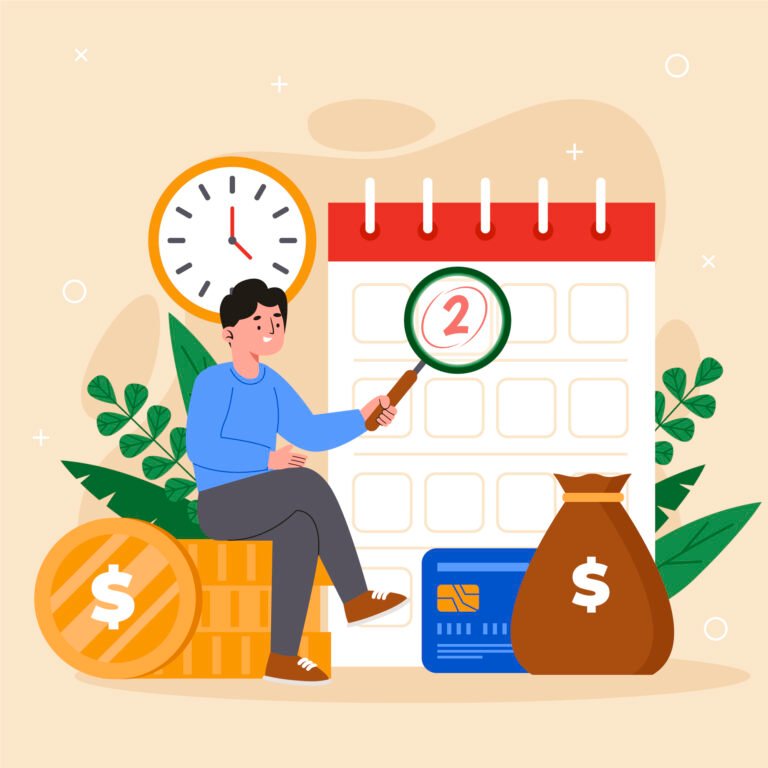1. Why Paying Off Your Mortgage Early Matters
💸 The True Cost of a 30-Year Loan
On paper, a 30-year mortgage may seem manageable — lower monthly payments and more breathing room in your budget. But what many people don’t realize is how much extra they’ll pay over the life of the loan.
For example, a $250,000 loan at 6% interest over 30 years ends up costing over $289,000 in interest alone — more than the original loan! You’re effectively paying for two homes, not one.

Table of Contents
🐍 How Interest Eats Away at Your Wealth
In the early years of your mortgage, most of your payment goes toward interest, not your actual home. It’s a reverse snowball: You’re chipping away at debt while your money is feeding the bank’s profits.
Every year you continue paying the minimum, you’re losing money that could’ve gone into investments, savings, or even early retirement.
🕊️ Freedom, Not Just Ownership
A mortgage-free life isn’t just about saving money — it’s about control. Without a monthly mortgage, you can:
- Take career risks
- Start a business
- Travel more
- Save aggressively for retirement
It’s not just owning your home — it’s owning your life.
2. Shift Your Mindset: Think Like a Debt Hacker
🔓 Stop Seeing the Mortgage as “Fixed”
Most people treat their mortgage like a utility bill — fixed, non-negotiable, and something they’ll be paying for decades. But that mindset is what keeps you stuck.
Your mortgage isn’t carved in stone. Every extra payment, every tweak to how often you pay, chips away at the timeline. It’s not about overhauling your life — it’s about outsmarting the system.
💡 You Don’t Need to Be Rich — Just Smart
Paying off your mortgage early isn’t reserved for high-income earners. In fact, many middle-class homeowners do it by using strategy, not salary.
You don’t need to throw thousands at your mortgage every month — you just need to consistently send a little extra and know where that money is going. This is a game of intentionality, not income.
📈 The Compounding Power of Small Changes
Here’s the truth: even a small change — like rounding up your mortgage payment by $50 or making one extra payment a year — has a snowball effect.
These extra bits don’t just reduce your balance — they reduce future interest, which makes your next payment more powerful. It’s compound interest, flipped in your favor.
Small steps → Big results → Years shaved off your loan.
3. The Biweekly Payment Trick That Shaves Off Years
🔍 What It Is and How It Works
The biweekly payment strategy is one of the simplest mortgage hacks — and yet, most homeowners overlook it. Instead of making one monthly payment, you split it in half and pay every two weeks.
Why does this work? Because there are 52 weeks in a year — and 26 biweekly periods — meaning you’ll make 13 full payments per year instead of 12. That extra payment goes straight toward the principal.
🧮 Real-World Example: $250,000 Loan Cut by 5 Years
Let’s say you have a $250,000 mortgage at 6% over 30 years. Your regular monthly payment is around $1,498.
Switching to biweekly payments means you’ll pay about $749 every two weeks — which adds up to one full extra payment per year.
Result:
- Loan paid off ~5 years early
- Over $50,000 saved in interest
- All without increasing your income or budgeting stress
⚙️ Set It and Forget It With Automation
The beauty of the biweekly method? It’s completely passive once you set it up.
Many lenders offer a biweekly payment plan — or you can set up your own through your bank’s bill pay feature.
Tip: Confirm that your lender applies extra payments to principal only and doesn’t just hold them until the next due date.
4. Round Up Every Month (Pain-Free Extra Payments)
➕ Why an Extra $100 Can Save You Tens of Thousands
You don’t need to make massive lump-sum payments to make a big dent in your mortgage. Just rounding up your payment by $50, $100, or $200 every month can dramatically reduce both your loan term and the interest you’ll pay.
Example: On a $250,000 mortgage, just $100 extra per month can cut off nearly 5 years and save over $30,000 in interest.
🧠 How to Trick Yourself Into Paying More
Treat that round-up like it’s part of the regular bill — not a choice.
If your mortgage is $1,432, pay $1,500. Better yet, schedule an automatic transfer for the higher amount so you never “see” the money.
Round up once, and you’ve made a nice gesture. Round up every month, and you’re building a system that quietly destroys debt in the background.
💰 Use Windfalls and Bonuses Strategically
Get a raise, a tax refund, or a bonus at work? Put just a portion of it toward your mortgage principal.
- Extra paycheck from a 3-paycheck month? Boom, that’s one extra payment.
- Birthday money, side hustle income, or cashback rewards? All fair game.
These occasional boosts can replace years of minimum payments, especially when applied directly to the principal.
5. Refinance — But Only If It Meets This Criteria
✅ When Refinancing Makes Sense (And When It Doesn’t)
Refinancing can be a powerful tool — but only if it truly saves you money. It makes sense when:
- You can get a lower interest rate
- You’re switching from a 30-year to a 15- or 20-year loan
- You plan to stay in the home long enough to recoup closing costs
It doesn’t make sense if:
- You’re extending the loan just to get lower payments
- The fees outweigh the interest savings
- You’re planning to move in a couple of years
⏳ Shorter Term, Lower Rate = Mortgage Killer
A 15-year mortgage typically comes with a lower interest rate and significantly less paid in total interest.
Yes, the monthly payment is higher, but the savings are massive.
Example:
- 30-year loan @ 6% on $250K: ~$290K in interest
- 15-year loan @ 5.25%: ~$111K in interest
That’s nearly $180K saved, just by cutting the term and getting a slightly better rate.
⚠️ Watch Out for These Hidden Fees
Refinancing isn’t free — and those costs can sneak up on you.
Look out for:
- Loan origination fees
- Appraisal and title costs
- Prepayment penalties from your current lender
Always calculate your break-even point — how long it will take for the monthly savings to cover the upfront costs.
🛑 6. Avoid This Common Mistake: Lifestyle Inflation
🏡 Why Bigger Homes = Longer Debt
It’s tempting: you get a raise or your family grows, and suddenly that bigger house looks necessary. But moving up usually means starting the mortgage clock over again — often at a higher amount and interest rate.
Ask yourself: Do I want more space… or more freedom?
👀 How to Prioritize Financial Freedom Over Status
Homeownership often comes with a desire to “keep up.” But fancy upgrades, over-the-top décor, and unnecessary renovations can turn your house into a money pit.
Instead, shift your goal from “looking wealthy” to actually building wealth — by cutting your mortgage down faster.
✂️ The Power of “Living Below Your Means”
Every dollar you don’t spend on a larger house, luxury furniture, or unnecessary upgrades is a dollar that can go straight to your mortgage.
Living below your means doesn’t mean sacrificing comfort — it means choosing peace over payments. It’s the foundation of long-term financial security.
7. Track Your Progress and Stay Motivated
🎯 Visualize the Years Dropping Off Your Loan
One of the best ways to stay motivated is to see your progress. Watching your balance shrink month by month — and your “end date” move closer — can be incredibly satisfying.
Print a mortgage amortization chart and color it in. Or hang a “debt-free countdown” on the fridge. When you visualize progress, you’re more likely to stick with the plan.
📱 Use Mortgage Payoff Calculators and Apps
There are plenty of free tools that make tracking simple and addictive. Try apps like:
- Undebt.it (great for payoff planning)
- Zillow Mortgage Calculator
- Bankrate’s Extra Payment Calculator
These tools show you how small changes can shave off months or years — and how much interest you’re saving every time you make an extra payment.
🎉 Celebrate Key Milestones Along the Way
Staying the course on a long-term goal like paying off a mortgage takes serious discipline — so reward yourself when you hit key milestones.
Some ideas:
- Celebrate every $10K of principal paid off
- Treat yourself when you hit the halfway point
- Plan a small vacation or weekend getaway when you’re one year away from being mortgage-free
These moments keep the journey fun, not just frugal.
FAQ: Mortgage Payoff Hacks
❓ Can I Do This If I’m Already Living Paycheck to Paycheck?
Yes — but it requires starting small and strategic. You don’t need hundreds of extra dollars a month to get started.
Try this:
- Round up your payment by just $25
- Switch to biweekly payments to sneak in one extra per year
- Redirect occasional windfalls (tax refunds, bonuses, gifts) to your principal
Even tiny steps add up over time. The key is consistency, not perfection.
🏠 What If I Plan to Sell My Home Soon?
If you’re planning to move in the next 1–3 years, aggressive payoff may not be the best use of your money — unless:
- You’re trying to build equity faster
- You want to increase your profit from the sale
- You’re refinancing to sell with a better rate
Otherwise, it might be smarter to keep payments regular and use extra cash for your next down payment or other investments.
💸 Is It Better to Invest the Extra Money Instead?
This is a classic debate — and it depends on your financial priorities.
- Investing can potentially offer higher long-term returns (especially in index funds or retirement accounts)
- Paying off your mortgage guarantees a return equal to your loan’s interest rate (usually 5–7%), risk-free
If you’re choosing between the two, ask yourself:
- Do I value certainty or growth right now?
- Will being mortgage-free help me sleep better at night?
- Can I do both — invest a little and still pay down faster?
For many, a balanced strategy works best: contribute to investments while still sending a little extra to kill the mortgage sooner.
Read Also: How I Paid Off $12,000 in Debt Using the Snowball Method






